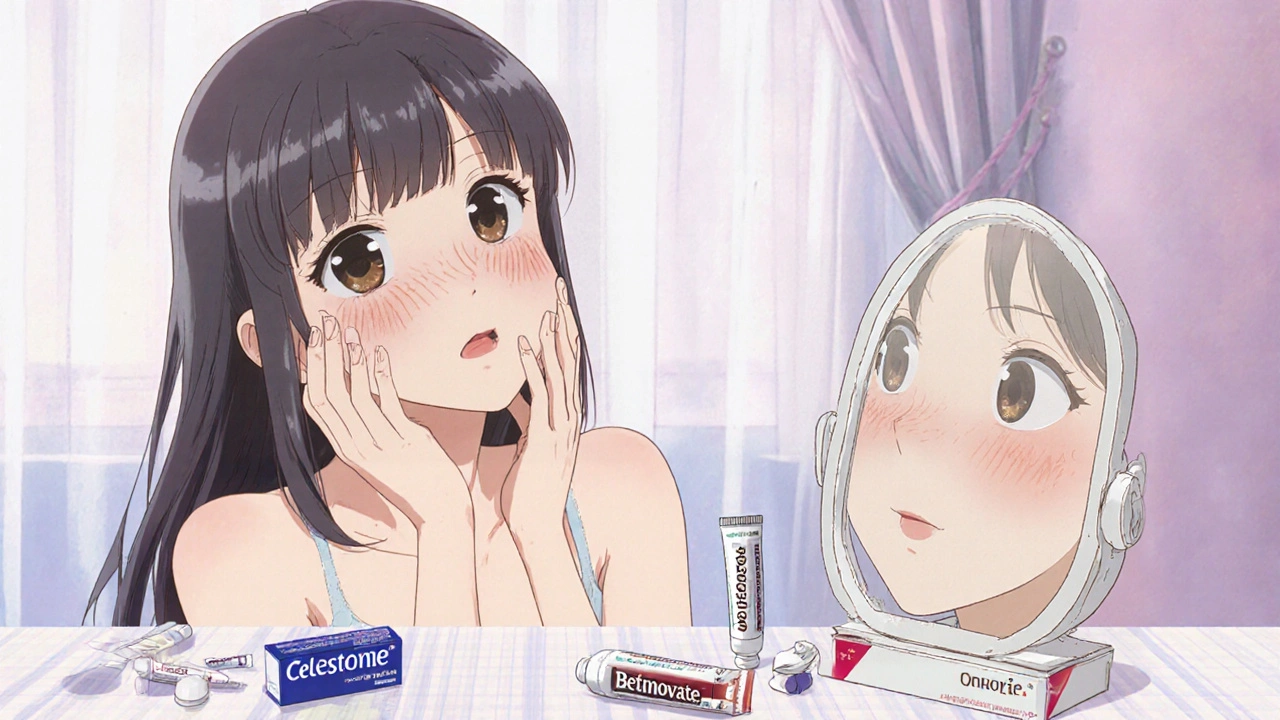Steroid Cream: What It Is, How It Works, and What Alternatives Exist
When your skin turns red, itchy, or flaky, steroid cream, a topical medicine that reduces skin inflammation by calming the immune response. Also known as topical corticosteroids, it’s one of the most common treatments doctors reach for when skin conditions flare up. But it’s not magic—it’s a tool. Used right, it brings quick relief. Used wrong, it can make things worse. That’s why knowing how it works, when to use it, and what else might help matters more than just grabbing the nearest tube.
Steroid cream works by slowing down your skin’s immune reaction. When you have eczema, psoriasis, or contact dermatitis, your body overreacts to something harmless—like soap, pollen, or even stress—and your skin pays the price. The cream doesn’t cure the cause, but it shuts down the inflammation, letting your skin heal. It’s not an antibiotic, so it won’t kill bacteria or fungi. That’s why you’ll see it paired with antifungal cream, a treatment used to fight skin infections like ringworm or tinea versicolor in some cases. If you’ve got a fungal infection on top of inflamed skin, using just a steroid cream can make the fungus spread. That’s why some products combine both, or why doctors will tell you to treat the fungus first.
Not all steroid creams are the same. Some are mild, meant for the face or sensitive areas. Others are strong, meant for thick skin on elbows or feet—and only for short bursts. Using a high-strength cream on your eyelids for weeks? That’s a recipe for thinning skin, stretch marks, or even worse, rebound inflammation when you stop. And if you’re using it for something that’s not really inflammation—like a bug bite or mild rash—you might be masking a problem instead of solving it. That’s where alternatives come in. allantoin, a gentle skin-soothing ingredient found in many moisturizers and barrier creams can calm irritation without touching your immune system. Oatmeal baths, ceramide-rich lotions, and even cooling gels can help too, especially for mild cases or long-term maintenance.
Many people reach for steroid cream because it works fast. And it does. But what happens after? If your skin keeps flaring up, the real question isn’t whether you need more cream—it’s why it keeps happening. Stress, allergens, dryness, even the products you use on your skin can all be triggers. That’s why some of the most helpful posts here dig into how stress causes itching, how to choose the right moisturizer, and when to skip steroids entirely. You’ll find comparisons between steroid creams and other treatments, tips to avoid side effects, and real talk about what works for different skin types. This isn’t about pushing one solution. It’s about giving you the tools to make smarter choices—so your skin stays calm, without relying on a tube you might not even need.
Betamethasone and Acne: Can Steroid Creams Help or Worsen Breakouts?
Betamethasone may seem to calm acne flare-ups, but it actually worsens breakouts by clogging pores and weakening skin defenses. Learn why steroid creams aren't a solution-and what to use instead.
View More
